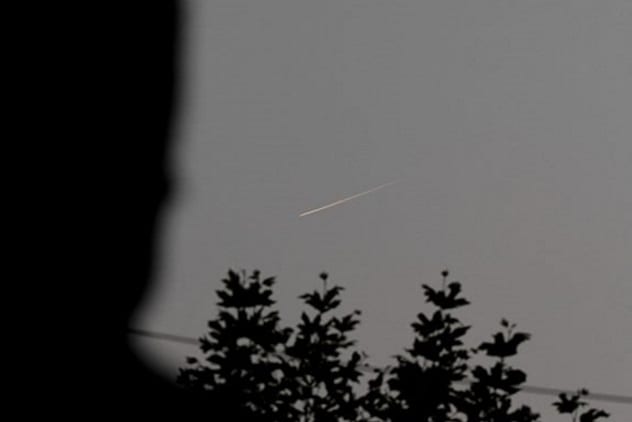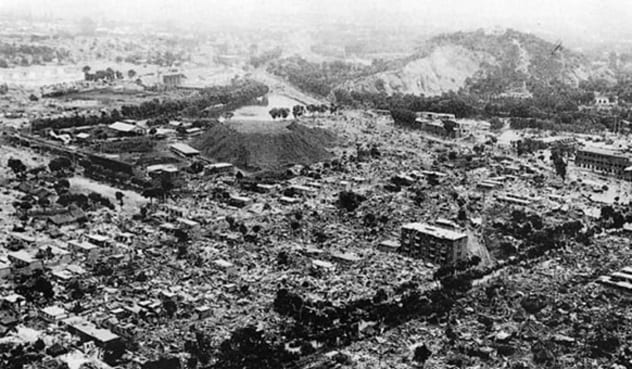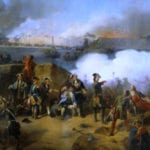 Music
Music  Music
Music  History
History 10 Less Than Jolly Events That Occurred on December 25
 Weird Stuff
Weird Stuff 10 Funny Ways That Researchers Overthink Christmas
 Politics
Politics 10 Political Scandals That Sent Crowds Into the Streets
 Weird Stuff
Weird Stuff Ten Bizarre Facts About The Doge Meme
 Our World
Our World 10 Ways Your Christmas Tree Is More Lit Than You Think
 Movies and TV
Movies and TV The 10 Coolest Stars to Set Sail on The Love Boat
 History
History 10 Things You Didn’t Know About the American National Anthem
 Technology
Technology Top 10 Everyday Tech Buzzwords That Hide a Darker Past
 Humans
Humans 10 Everyday Human Behaviors That Are Actually Survival Instincts
 Music
Music 10 Surprising Origin Stories of Your Favorite Holiday Songs
 History
History 10 Less Than Jolly Events That Occurred on December 25
 Weird Stuff
Weird Stuff 10 Funny Ways That Researchers Overthink Christmas
Who's Behind Listverse?

Jamie Frater
Head Editor
Jamie founded Listverse due to an insatiable desire to share fascinating, obscure, and bizarre facts. He has been a guest speaker on numerous national radio and television stations and is a five time published author.
More About Us Politics
Politics 10 Political Scandals That Sent Crowds Into the Streets
 Weird Stuff
Weird Stuff Ten Bizarre Facts About The Doge Meme
 Our World
Our World 10 Ways Your Christmas Tree Is More Lit Than You Think
 Movies and TV
Movies and TV The 10 Coolest Stars to Set Sail on The Love Boat
 History
History 10 Things You Didn’t Know About the American National Anthem
 Technology
Technology Top 10 Everyday Tech Buzzwords That Hide a Darker Past
 Humans
Humans 10 Everyday Human Behaviors That Are Actually Survival Instincts
10 Times People At War Mistook Nature For An Enemy Attack
Throughout history, humans have not stopped fighting wars.[1] We have an innate desire to live in peace, but then we see other people as our enemies, and chaos is unleashed. To this day, psychologists struggle to explain our inclination toward aggression and war, which is considered a pathological behavior of human beings. In fact, much of the effectiveness of war lies in the devastating psychological effects it has on people. When a war breaks out, people’s fear often makes them react insanely to even minimal things, regardless of whether they take an active part in the war or not.
But sometimes, Mother Nature herself also decides to give us an extra push toward the edge of extinction. Due to the paranoia of soldiers in the middle of war, simple things like a shooting star or a bird can take them by surprise, causing panic and destruction. Below, we have ten anecdotal examples of such situations, which show us how easy it is to end up destroying ourselves over a simple misunderstanding.
10 The Marauding Cattle
1864

From its beginnings, the United States constantly had differences with the native tribes living in North American territory, to say the least. Although Native Americans had lived there for centuries, they were forced to negotiate with the US to give up much of what the former considered to be their own land. The tensions between both parts did not diminish but continued to increase toward the mid-19th century, during the US Civil War. Then, in November 1864, hundreds of American soldiers in the state of Colorado killed more than 150 natives of the Cheyenne and Arapaho tribes. This event would later be known as the Sand Creek Massacre.
But a few months before that, on June 16, 1864, the city of Denver was terrified by the warning of an imminent enemy attack. During the previous night, a rancher named William Shortridge entered the city to alert everyone that he had seen a band of indigenous warriors approaching. The people panicked, believing that it was an attack by the Cheyenne. The natives had a very bad reputation among the settlers, being especially known for capturing and brutally killing Americans. So Shortridge arrived in Denver accompanied by dozens of people from other places, who also feared for their lives.
Immediately, the residents of Denver tried to protect themselves. People in the area ransacked the local armory, after which they took cover inside buildings with barricades. But they soon learned that the band of warriors that Shortridge saw on the horizon was actually a cloud of dust created by a cattle stampede.[2] The animals were being driven by a group of drunk Mexican cattle drivers, who’d provoked the stampede. In those times, it was common to see thousands of cattle being driven by cowboy bands across hundreds of kilometers of open land. So it was a common livestock activity that mobilized the entire city of Denver that day, combined with a good dose of fear, of course.
9 A Space Nuke Over America
2001

2001 was a particularly tense and bellicose year for the United States. After several years of difficult relations, the Americans invaded Afghanistan in retaliation for the terrorist attack on September 11 in New York. In April of the same year, tensions between China and the United States increased when an American spy plane collided with a Chinese jet, killing the latter’s pilot. So the government of the United States was quite nervous around that time. It was then, also in the month of April, that nature decided to play a nasty trick on the authorities.
On April 23, several American satellites and ground systems detected a large explosion in the atmosphere, at a height of almost 30 kilometers (19 mi). The explosion occurred in the early morning 1,800 kilometers (1,118 mi) from San Diego, California. While the satellites detected the flashes of the explosion, the shock wave was sensed even 11,000 kilometers (6,835 mi) away in Germany. If this isn’t enough to illustrate the magnitude of the event, scientists estimated it was similar to a small nuclear explosion, releasing a quarter of the energy of the atomic bomb dropped on Hiroshima.
So the US government had solid reasons to worry about this issue. Given the exceptionally inconvenient timing of the occurrence, tensions began to increase again in Washington. Then, the Pentagon came to save the day and assured the authorities that there was no danger. The explosion was not caused by an enemy bomb but by a meteor 3 meters (10 ft) long that could not withstand its entry into the atmosphere.[3] The researchers studying the event stated that had the meteor reached the Earth shortly before or after, the explosion would have happened over a large city.
8 Denver Is Razed
1955

On May 22, 1955, the residents of Jelm and Woods Landing, Wyoming, heard a strange and deep noise that was immediately followed by an earthquake. Inside many houses, the dishes and cupboards began to shake uncontrollably. Meanwhile, the earthquake also caused a group of fishermen to end up trapped inside their tent. In the midst of the chaos, a frightened Jelm resident quickly concluded that the earthquake had been caused by an atomic bomb which had been dropped on Denver. Of course, such an assumption was based on the common fear of an imminent nuclear war at that time, although it proved to be an incorrect conclusion.
The earthquake that occurred that day was of intensity V on the Modified Mercalli intensity scale.[4] In other words, it was a moderately strong earthquake which, in addition to the ground shaking, also caused the fall of household objects and the shattering of windows. But we know that your typical nuclear bomb is not capable of causing such damaging earthquakes beyond a few tens of kilometers around. So for a nuclear bomb detonated in Denver to cause a strong earthquake in Jelm, which is almost 180 kilometers (112 mi) away, it would have to have been quite a device. If so, the residents would have faced worse problems than the tremor under their feet.
But in any case, we must understand this concerned citizen. In 1955, the Cold War was at one of its most critical points, with the United States and the Soviet Union competing to have the largest atomic bomb. And the year before, the United States formally declared its intention to pulverize the Soviets with nuclear weapons if they attacked first. So the Americans were worried that an enemy atomic bomb could fall on them at any moment. Confusing an earthquake with a nuclear explosion in those times was certainly excusable.
7 Meteorites Are The Real Enemy
2016

Above, we saw that the US military does not particularly like meteors. But in the middle of a conflict, even civilians can also see shooting stars with some suspicion, fearing that they’re actually something less friendly. To put us in context about the following item, the republics of India and Pakistan have maintained a territorial conflict for decades. After their independence from Britain in 1947, both nations failed to agree on who would control a large border region called Kashmir. For this reason, India and Pakistan have fought wars in that place, and the territorial dispute remains strong to this day.
In September 2016, India launched an attack on the border with Pakistan after militants killed 19 Indian soldiers that month. India made a precise attack on Pakistani launchpads in the area, causing numerous casualties on the enemy side. Then, a few hours after the event, the inhabitants of the city of Srinagar witnessed something that made them fear for their lives to an extreme degree. When they looked up, they saw a streak of light descending across the sky above their heads. The residents panicked at the thought that it was a missile launched by Pakistan in retaliation for the previous attacks by India.[5] But soon, the Indian government calmed the population by explaining that what they saw was not a missile but a simple meteorite.
6 The Sun Wanted Us Dead
1967

To detect any attack by the Soviets in advance, the US Army placed missile-detection systems in Alaska, Greenland, and the United Kingdom. On May 23, 1967, all three systems stopped working simultaneously. The American authorities were convinced that such thing could only be sabotage by the Soviets, which would be enough to start a full-scale war. So the US Air Force authorized the deployment of fighter jets equipped with nuclear weapons. A new world war was approaching on the horizon, being only minutes away from beginning.
By then, NORAD—formed by the American and Canadian militaries to analyze enemy threats—had been studying solar activity and its effects on Earth for years. On the same day that the defense systems mentioned above turned off, solar forecasters detected that the Sun had launched a powerful solar flare straight at Earth. In contact with the atmosphere, such a burst of energy causes large electric discharges that can fry systems on the surface. The sighting was confirmed by multiple observatories around the world, and then the scientists realized that the American radars were not sabotaged by the Soviets but that the solar flare had hit them.
Just in time, the forecasters notified both NORAD and the Pentagon of the situation.[6] Both the high-ranking military officials and the president understood that they were not being attacked by the USSR, so they finally calmed down. The American warplanes were ordered not to take off, and the military returned to a normal state of alert. Nuclear war had been postponed, although that day, outer space did make an effort to annihilate us once and for all.
5 The Father Of Earthquakes
1976

After years of tension between the two nations, relations between China and the Soviet Union began to break down in the 1970s. At the beginning of the decade, China had decided to approach the US government while perceiving the Soviets as a serious threat to its security. By 1976, China and the USSR had abandoned all diplomatic communications, approaching dangerously close to armed conflict. And it was in that same year that China suffered one of the deadliest earthquakes in history: the Tangshan earthquake.
It was 3:42 AM on July 28 when the ground in the city of Tangshan began to shake violently. In just half a minute, most of the buildings across dozens of kilometers around collapsed to the ground, killing at least 240,000 people. And we know that the first thing that came to minds of survivors to explain what was happening was a nuclear war.
A 26-year-old student named Zhu Yinlai, who was sleeping with other classmates at his college, was abruptly awakened by the earthquake and thought at first that a nuclear explosion had occurred. When he saw the building shake, he soon understood that it was an earthquake, and at that very moment, his bedroom collapsed. Unlike many of his roommates, Zhu managed to survive. Meanwhile, other people in nearby regions had the same fear and believed that a Soviet atomic bomb had been dropped somewhere in the vicinity.
They had reasons to believe something like that. Tangshan seemed like an obvious target to be attacked first by the Soviets, since it was an industrial city. Another thing that seems to have terrified the victims even more is that, shortly before the earthquake, they could see big flashes of light in the sky. For a moment, these lights might have seemed reminiscent of a nuclear explosion, although they were a natural phenomenon known as “earthquake lights.” A geologist in the area saw the lights and immediately proceeded to take shelter. Although the earthquake was not the result of a nuclear bomb, it had the power of one. It is estimated that the event released the same energy as 400 Hiroshima atomic bombs.[7]
4 ‘Jupiter Is Spying On Us!’
2013

It happens that India doesn’t just have territorial problems with Pakistan. Also around the region of Kashmir, India and China share a border more than 4,000 kilometers (2,485 mi) long. As China claims that part of the territory belongs to it and has even occupied it, both nations have had—for a change—conflicts and wars and have been unable to reach an agreement so far. Due to this incursion of the Chinese that India considers “illegal,” the latter country has deployed and maintained troops along the border.
In August 2012, the Indian army in that region began to report sightings of bright objects flying in the sky. The troops assumed that these lights were actually Chinese spy drones, so they decided to keep a daily track of the objects. By February 2013, the army had sighted the mysterious lights 329 times. And on 155 of those occasions, the objects seemed to have entered Indian airspace, violating the agreed territorial limit.
As expected, these events heated up the situation between India and China. But fortunately, the Indian army did not rush to take action and instead decided to call the Indian Institute of Astrophysics to be sure of the origin of the objects sighted.[8] After the military gave them the collected data on the time and trajectory of the lights, the astronomers concluded that what the former had actually seen was Jupiter and Venus. It seems that the atmosphere had distorted the apparent brightness of these planets at the altitude of more than 4,700 meters (15,420 ft) where the troops were located.
3 The Aftermath Of A Bombing
1915

Throughout the history of warfare, attacking civilians has been a frequently considered tactic due to the wide range of destructive effects it produces on the population. It is well-known, for example, that bombing not only leaves physical consequences in the survivors but also psychological ones. Those who are victims of an enemy attack with bombs are often prone to nightmares, flashbacks, and post-traumatic stress disorder, if they do not suffer even worse pathologies. Understanding these effects during World War I, Italian general Giulio Douhet theorized that aerial bombings on strategic cities could be decisive in any war.
The following story comes from the words of Douhet himself and is contained in his book The Command of the Air. In November 1915, two Austrian planes bombed the city of Brescia, Italy. The result was seven dead and ten injured, all of them civilians. Then, Douhet says that during funeral services for the dead, one of the mourners mistook a bird for another enemy bomber approaching and thus aroused panic among the others present. Douhet used this anecdote as an example to demonstrate the enormous, long-lasting impact on an emotional level that an aerial bombing would have on the civilian population, ultimately demoralizing the enemy country itself.[9]
2 Maximum Alert
1960

The truth is that during the Cold War, American systems of missile detection had serious difficulties when it came to differentiating natural phenomena from an enemy attack. They were slow and unable to handle large amounts of data, which sometimes led them to misinterpret unexpected events. One particular case of this type occurred in 1960. A missile-detection system placed in Greenland was directly connected to the high command of the US Air Force. On October 5 of that year, the system sent an alert about a massive Soviet attack directed at the United States, composed of dozens of nuclear missiles.
The system showed a 99.9-percent certainty that the attack was real, so the US military panicked and fell into chaos. The Strategic Air Command (SAC), a former division within the Air Force and the Department of Defense, went into its highest alert level. This meant that the authorities would have only a few minutes to make a decision; the president had just ten minutes to decide whether to launch a counterattack or not. However, some people in the division began to doubt that an attack was really taking place. A nuclear strike on American soil did not make much sense when, at that very moment, Soviet leader Nikita Khrushchev was visiting New York.
So a member of the SAC decided to check the alert data of the detection system again. Then, he realized it was all a mistake. What the early warning system in Greenland had actually captured was the Moon rising on the horizon over Norway.[10] Since nobody had adjusted the system to ignore the interference of the Moon, the computers interpreted its emergence as a fleet of missiles about to blow up America. Soon, everything was calm again, and this unfortunate event forced the United States to improve its defense systems.
1 Military Neurosis
1943

During the first part of World War II, the island of New Georgia in the Pacific Ocean was occupied by the Japanese, who considered it strategic for air combat. Then, in 1943, the United States decided to take control of New Georgia by sending numerous troops to the island. But already from the beginning, the American soldiers knew that it was not going to be an easy task. The island was hot, humid, and dense with vegetation.
During the first days of July, the 43rd US Division arrived in New Georgia and deployed troops from the 172nd and 169th infantry on the coast of Zanana Beach. Their target, an airfield occupied by the Japanese, was a few kilometers away, and surprisingly, there were no traces of the enemy on the coast. It seemed that the operation would be quick. But it only appeared so. The only way to reach the airfield was to cross the dense jungle through a horrible footpath called the Munda Trail, and a lot of Japanese soldiers were hiding there. While the 172nd infantry knew how to defend themselves relatively well, the soldiers of the 169th were inexperienced in combat.
To spend the night, they dug small trenches called foxholes, but these were too far apart from each other. Taking advantage of the darkness, some Japanese silently got into foxholes and murdered the Americans or shouted phrases to demoralize them. Little by little, the men of the 169th began to lose their sanity. They did not sleep and confused everything they saw or heard with Japanese soldiers. Phosphorescence on rotten logs was seen as Japanese signals, the repulsive smell of the jungle was poisonous gas, and the land crabs moving through the vegetation were Japanese approaching.
The American soldiers gave in to their fear and started shooting or throwing grenades at everything in the middle of the night. In the morning, the results of this mayhem became evident. Many soldiers of the 169th had killed each other after mistaking their comrades for the Japanese.[11] Although the US soldiers ultimately defeated the Japanese and took over New Georgia, the 169th infantry suffered a psychological torment like no other troop in that engagement.
Economy student, passionate about Graphic Design, an avid enthusiast of the art of writing.
Read more examples of thoroughly jangled war nerves on 10 Unbelievable Wartime Monster Sightings and 10 Unsettling Wartime Urban Legends.








